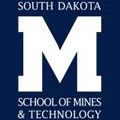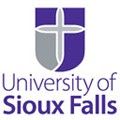Best South Dakota Colleges & Universities

Higher education attainment in South Dakota has increased at a slow but steady pace since 2011. At that time, 39.4 percent of residents in the state held a college degree or credential; by 2014, that number had risen to 45.1 percent. A great deal of work is still needed in order to meet the growing demand of industries in the state. However, the numerous South Dakota colleges are poised to meet that demand through a variety of programs. Students interested in attending college in South Dakota can get a good overview of the higher education landscape through this guide. We looked at tuition rates, financial aid packages, alumni compensation, cost of living in metropolitan areas and college planning tools offered by the state.
South Dakota College Leaderboard: Rankings
With all the important factors that contribute to selecting a school, researching colleges can quickly become overwhelming. To aid in the college search, we have compiled the list below that ranks South Dakota colleges and universities based on factors like tuition cost and graduation rates. Check out the top-ranking schools in South Dakota for the school year below.
Rankings Methodology
- Located in South Dakota
- Public or private not-for-profit
- Institutionally accredited
- At least 10 total programs
- Median annual alumni earnings 10 years after entering the college
- In-state tuition and fees for undergraduates
- Student/teacher ratio
- 6-year graduation rate
- % of students receiving institutional financial aid (first-time, full-time undergrads)
- Average amount of institutional aid awarded per student (first-time, full-time undergrads)
- Availability of placement services upon completion
- Availability of academic/career counseling services
- Availability of employment services
- 3-year student cohort loan default rate
Integrated Postsecondary Education Data System (IPEDS): National Center for Education Statistics
Latest 'Final Release' data available as of Fall 2016 College Scorecard: U.S. Department of Education
2-Year Programs
Mitchell Technical Institute
Lake Area Technical Institute
Southeast Technical Institute
Western Dakota Technical Institute
Kilian Community College
Sisseton Wahpeton College
4-Year Programs
Augustana College
South Dakota State University
University of South Dakota
University of Sioux Falls
South Dakota School of Mines and Technology
Dakota Wesleyan University
Mount Marty College
Presentation College
Northern State University
Dakota State University
Black Hills State University
Sinte Gleska University
Oglala Lakota College
Find & Compare Colleges in South Dakota
Want to dive a bit deeper than the rankings list? This search tool lets students to do just that by allowing them sort schools by various factors like student population, location and acceptance rates. The results can then be compared side by side to provide an even more comprehensive look at the potential colleges in South Dakota.
College Planning & Assistance Programs in South Dakota
From the early college preparatory stages to the stresses of planning life after graduation, college can be challenging, and students are often looking for all the help they can get. South Dakota provides several resources to help empower its future and currents students, from assisting with high school schedules to helping graduates find new jobs. Below are a few of those student resources.
Reduced Tuition Dual CreditStudents who choose to get a jump-start on college courses can be rewarded with lower tuition rates. As of the 2016 school year, rates for early starters were just over $48 per credit hour. Courses are available online, in person at one of six on-campus locations or at one of three University Center locations. Eligibility requirements vary depending upon whether a student is a junior or senior and include a certain ACT or SAT score, meeting a minimum GPA and taking certain required courses.
Reduced Tuition ProgramsThose who want to attend college in South Dakota might be eligible for reduced tuition programs at the school of their choice. These programs are dependent upon certain criteria and are available for certain populations, such as those over the age of 65, military veterans, children and spouses of deceased or disabled public servants, state employees, K-12 teachers, and those who have residency in partner states like North Dakota, Wyoming and Minnesota.
TRIO ProgramsThese programs are designed to help students who come from disadvantaged backgrounds, including those from low-income families, those who are the first in their families to go to college and those who are disabled. Programs available in South Dakota include Upward Bound, Educational Talent Search and student support services specific to certain institutions in South Dakota, as well as national programs open to South Dakota students.
Evaluating the Cost of College in South Dakota
Understanding tuition and financial aid is one of the most important steps a student can take toward understanding the cost of college. These charts feature average tuition rates in the state, the average financial aid award and how many students actually receive those awards. By combining all of this information, prospective students can gain a better understanding of what they can expect to pay to attend college in South Dakota.
Source: CollegeBoard
Source: IPEDS
Source: IPEDS
* Institutional aid represents grant and scholarship funds directly awarded by a postsecondary institution.
* Financial aid data represents 4-year public and private nonprofit schools only.
Most Affordable Colleges in South Dakota
Solely looking at tuition will not accurately display the costs of attending a college. Instead, students should look at the net price, which is the cost of attendance minus any financial aid awarded. The following six South Dakota schools are the most affordable in terms of the lowest net price.
- 1.
 Oglala Lakota College
Oglala Lakota College
$3,662 - 2.
 Black Hills State University
Black Hills State University
$13,407 - 3.
 Northern State University
Northern State University
$14,387
- 4.
 Dakota State University
Dakota State University
$14,431 - 5.
 Sinte Gleska University
Sinte Gleska University
$15,089 - 6.
 University of South Dakota
University of South Dakota
$15,442
South Dakota College Net Price vs. National Average
Average
Annual Net Price
Source: College Scorecard
Note: Rankings/data represent 4-year public and private nonprofit schools only.
South Dakota Colleges with Top Alumni Earnings
How much will students make upon graduation? Though that answer depends on numerous factors, including the field of work the student chooses, there are some colleges that tend to produce alumni with higher salaries. These six colleges in South Dakota have the highest paid alumni ten years after their graduation.
- 1.
 South Dakota School of Mines and Technology
South Dakota School of Mines and Technology
$52,300 - 2.
 Augustana College
Augustana College
$42,600 - 3.
 South Dakota State University
South Dakota State University
$40,600
- 4.
 University of South Dakota
University of South Dakota
$39,500 - 5.
 Dakota State University
Dakota State University
$37,400 - 6.
 Presentation College
Presentation College
$37,100
South Dakota Alumni Salaries vs. National Average
Annual Median Earnings
10 Years After Entering College
Source: College Scorecard
Note: Rankings/data represent 4-year public and private nonprofit schools only.
Best South Dakota Colleges for Low Student Loan Debt
High student loan payments can quickly negate the thrill of a great paycheck. These colleges in South Dakota produce alumni with the lowest amounts of student debt in the state. In addition, we have compared them to the national average, so students considering a student loan can see exactly where they stand.
- 1.
 University of South Dakota
University of South Dakota
$24,000 - 2.
 Dakota State University
Dakota State University
$24,933 - 3.
 Presentation College
Presentation College
$25,000
- 4.
 South Dakota State University
South Dakota State University
$25,000 - 5.
 University of Sioux Falls
University of Sioux Falls
$25,000 - 6.
 Northern State University
Northern State University
$25,654
South Dakota College Grad Debt Vs. National Average
Median Federal Student
Loan Debt After Graduation
Source: College Scorecard
Note: Rankings/data represent 4-year public and private nonprofit schools only.
Cost of Living in South Dakota: Housing, Healthcare and Other Expenses
When considering the cost of school, students often overlook the cost of living, which can affect a student's budget greatly. South Dakota boasts a cost of living that is lower than the national average, and the costs of housing and transportation are particularly attractive when compared to that of other states. We have examined the cost of living in metropolitan areas of South Dakota, as well as the entire state, to help students gauge expenses for attending a college in South Dakota.
| area | composite index | housing | groceries | utilities | transportation | health care | misc. |
|---|---|---|---|---|---|---|---|
| Statewide Average | 97% | 100% | 102% | 93% | 88% | 99% | 96% |
| Pierre | 102% | 117% | 104% | 92% | 99% | 96% | 95% |
| Rapid City | 95% | 91% | 109% | 88% | 77% | 94% | 100% |
| Sioux Falls | 93% | 91% | 92% | 100% | 89% | 107% | 93% |
Source: The Council for Community and Economic Research
Accreditation for South Dakota Colleges
Prospective students should consider a school's accreditation status. Accreditation is vitally important, as it means an independent accrediting body has evaluated the school and found it to fulfill the requirements of a quality education. A degree earned from an accredited school typically holds a great deal of weight and allows students more opportunities for financial aid and for easier credit transfers.
Schools in South Dakota are accredited by the Higher Learning Commission, which is responsible for the accreditation of colleges in 19 states in the North Central region. In addition to this accreditation, schools can also opt for accreditation for specific programs. Here are a few examples:
- The National Association of Schools of Music, Commission on Accreditation accredits all music programs, both degree granting and non-degree granting, at Augustana University.
- The National Council for Accreditation of Teacher Education accredits bachelor's and graduate programs in teacher education at Black Hills State University.
Popular Cities to Attend College in South Dakota
Brookings
With a population of over 22,000, Brookings is the fourth most populous city in South Dakota, and the second largest manufacturing community in the state. From its historic buildings to its shops to its tasty restaurants, Brookings has a little something for everyone.
| College Name | School Type | Annual Net Price | Annual Median Earnings 10 Years After College Only includes former students who received federal financial aid. |
|---|---|---|---|
 South Dakota State University South Dakota State University |
Public | $15,538 | $40,600 |
| Nine colleges make up this large university in the heart of Brookings. As the state's largest and most comprehensive higher education institution, SDSU serves over 12,500 students. Those students can choose from 73 majors, 36 specializations, 33 master's programs and 15 PhD programs, as well as two professional doctorates. Online and off-campus courses provide students with a more flexible way to obtain their education. | |||
Sioux Falls
Known as the "Heart of America," Sioux Falls is nestled on the banks of the Big Sioux River on the borders of Minnesota and Iowa. The city itself has a population of over 173,000, and the greater metropolitan area is home to over 250,000 people. Major employers include those in healthcare, grocery, banking and food products.
| College Name | School Type | Annual Net Price | Annual Median Earnings 10 Years After College Only includes former students who received federal financial aid. |
|---|---|---|---|
 Augustana University Augustana University |
Private not-for-profit | $18,621 | $42,600 |
| Founded by the Lutheran Church in 1860, Augustana welcomes students of all faiths and religions. Today, the college serves over 1,800 students in 53 majors, 41 minors and 15 pre-professional programs for undergraduates, as well as graduate and continuing education programs. Most students live on the 100-acre campus. | |||
 Southeast Technical Institute Southeast Technical Institute |
Public | $12,271 | $36,000 |
| Students seeking an associate degree, diploma or certificate can take advantage of one of the more than 50 programs at Southeast Technical Institute. Programs are focused with the intention of all students graduating within 24 months of enrollment. In fact, Southeast Tech turns out the third largest graduating class in the state, not to mention it is one of the most affordable post-secondary institutions in the state. | |||
 University of Sioux Falls University of Sioux Falls |
Private not-for-profit | $19,372 | $36,900 |
| This Christian, liberal arts school affiliated with the Southern Baptist church has a 98 percent placement rate for graduates. A 14-to-1 student-to-faculty ratio fosters intimate classroom settings for students in over 80 programs. Of the almost 1,500 students, 100 percent of them received financial aid as an incoming freshman. With well over 100 clubs and within an easy day's drive to several Midwestern cities, USF offers plenty of opportunities for fun. | |||
Source: College Scorecard
South Dakota College Resources
Students interested in South Dakota colleges can find a wealth of resources at the following links:
College Access 529This investment plan for parents, students and other interested parties provides college savings and tax benefits for those who start savings for college early.
Dakota Association for College Admission CounselingDesigned for professional counselors, this site offers information for parents and students on college fairs throughout North and South Dakota.
SD.gov: EmploymentThis area of the state website is a gateway to various employment opportunities, including SD Works, the state's biggest job site.
Select DakotaThis service of the Board of Regents provides information to those in high school and middle school, career seekers, adult learners, transfer students, parents and college counselors.
South Dakota AspireThis professional association of TRIO professionals in the state provides information for students and parents on initiatives available to aspiring students in South Dakota.
South Dakota Board of RegentsThis organization focuses on promoting education in the state and provides resources focused on financial aid and special programs for college students.
LearnHowToBecome.com is an advertising-supported site. Featured or trusted partner programs and all school search, finder, or match results are for schools that compensate us. This compensation does not influence our school rankings, resource guides, or other editorially-independent information published on this site.
View the most relevant programs for your interests and compare them by tuition, acceptance rate, and other factors important to you.